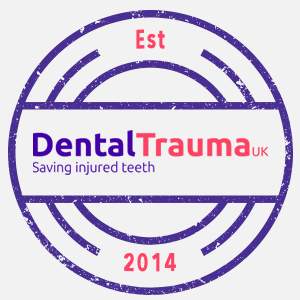Management aims
Management aims
When confronted with a patient with a traumatic dental injury it is important to obtain a thorough history of the incident. This should be documented in detail as it may be important from a dento-legal perspective. If the history and the clinical picture are not consistent it is essential to rule out any safeguarding issues.
A detailed history of the incident may also give you a clue as to what to expect during the clinical examination. If the patient has not been to an accident and emergency unit, quickly rule out the possibility of a head injury and if you suspect a problem refer to A&E immediately. This may even take priority over an avulsed permanent tooth.
If a jaw fracture is suspected, for example, a step deformity of the lower border of the mandible, difficulty opening the mouth, circumorbital ecchymosis (black eye), flattening of the cheek or a deranged posterior occlusion that cannot be accounted for by the dental injuries, consider a referral to an oral & maxillofacial unit.
Appropriate radiographs should be taken including an upper occlusal if a root fracture is suspected. The use of CBCT is an exciting possibility in the diagnosis and improved management of dental trauma in the future.

The aim in managing an acute traumatic dental injury is to restore appearance, function and rehabilitate the patient in order to save teeth.
– Dental Trauma Guide 2021
Fracture injuries
Fractures injuries usually affect the substance of the tooth itself and/ or the supporting alveolar bone
Traumatic dental injuries do not always occur in isolation and often present as multiple injury types in one or multiple teeth.
Principles for managing traumatic dental injuries
Cover any exposed dentine as soon as possible.
Reposition any displaced teeth.
Monitor pulp vitality long term.
Monitor teeth with open apices to ensure continued root formation.
Splinting technique
If flexible splinting is indicated to allow physiological movement and to reduce the risk of ankylosis, 0.016″ stainless steel orthodontic wire can be used. This is inexpensive, easy to bend by hand, and can be quickly and easily secured in position using standard composite as demonstrated in the video below.
Rigid splinting is rarely used and only required in cervical third root fractures. In such cases thicker rectangular orthodontic wire or something similar is useful.
Post-operative instructions
Should include asking the patient to:
Avoid biting into anything hard or soft with their front teeth for a couple of weeks
Resume normal tooth brushing immediately
Attend follow-up appointments as planned.
Long-term follow-up
Includes assessing pulp vitality using:
Clinical signs and symptoms
Radiographs
Sensibility testing.

“Sensibility testing is low priority at the initial presentation. Baseline values should be obtained at the first follow-up appointment.
Also remember you need 2 signs and symptoms to diagnose pulp necrosis, before root canal treatment is indicated.”
– Ms Serpil Djemal
Long-term follow-up
The longer-term aims are to preserve bone and soft tissues around the traumatised teeth to improve the chances of long-term rehabilitation when required. Acting quickly can minimise or prevent unwanted long-term effects of the traumatic incident.
In all but the mildest of cases, there will be sequelae that follow on from the traumatic dental injury and further treatment will almost inevitably be necessary. As soon as the initial treatment is provided, the patient embarks on a restorative treatment cycle.
Evidence based guidelines:
Two important resources have been used to develop this clinical update.
The Dental Trauma Guide
An excellent resource for information on the management of traumatic dental injuries in both the primary and secondary dentitions.
International Association of Dental Traumatology (IADT)
The International Association of Dental Traumatology (IADT) revised their guidelines in 2020 with a publication that is considered to present the best evidence-based on literature and professional opinion.
This update aims to highlight the current guidance for managing the various forms of dental trauma in order to maximise the chance of a successful outcome.




